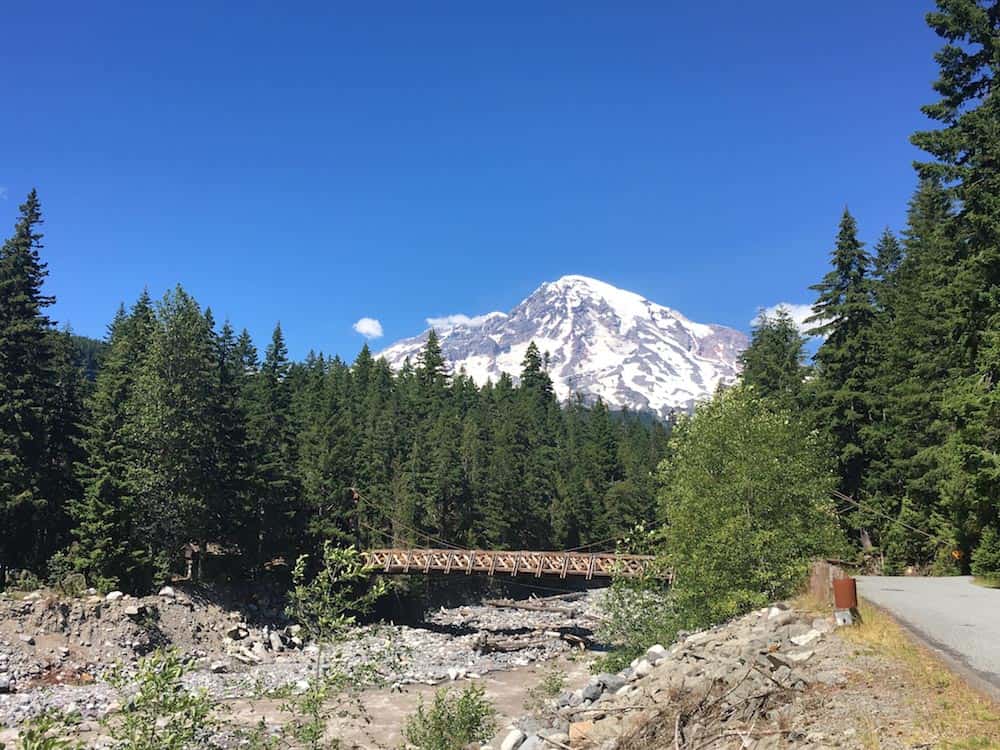
If you and your kids want to explore something, that goes BOOM! Then, head to a U.S. National Park featuring volcanoes or parts of volcanoes. At a National Park, you can learn about the types of volcanoes, volcanic eruptions and what happens after a volcanic eruption. You might even want to camp with a view of a volcano. Here are the top National Parks with Volcanoes.
15 Top National Parks with Volcanoes
Hawaii Volcanoes National Park
Haleakalā National Park
Crater Lake National Park
Mount Rainier National Park
Yellowstone National Park
Lassen National Volcanic National Park
Newberry National Volcanic Monument
Devil Tower National Monument
Sunset Crater National Monument
Mount St. Helens National Volcanic Park
Craters of the Moon National Monument and Preserve
Lava Beds National Monument
Capulin Volcano National Monument
El Malpais National Monument
Katmai National Park and Preserve
Aniakchak National Monument
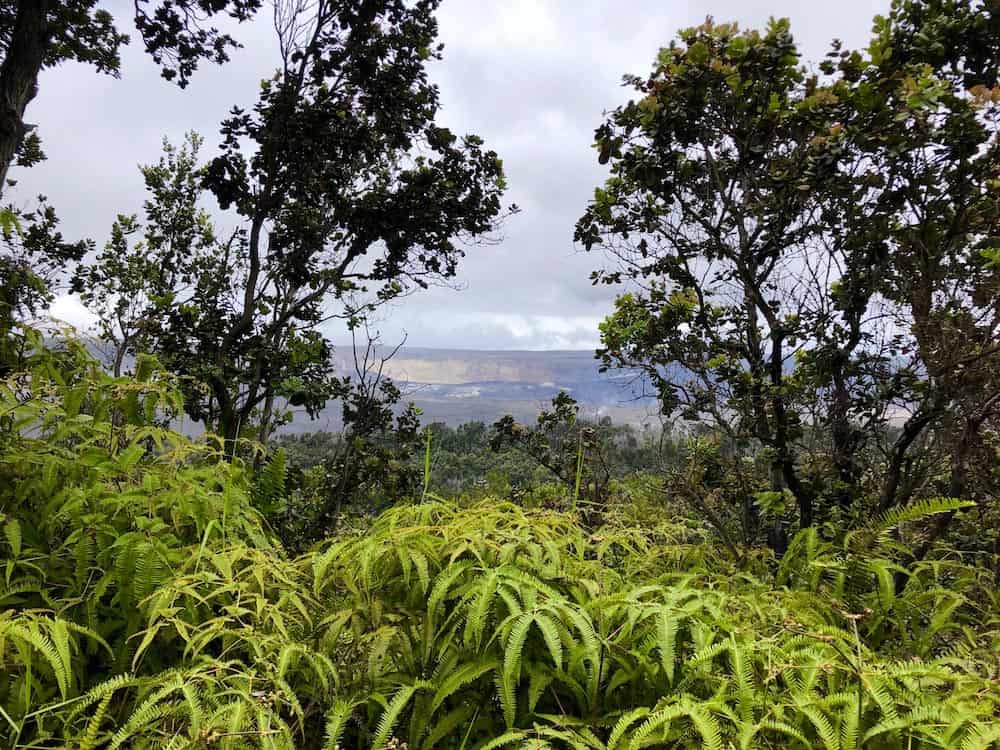
Hawaii Volcanoes National Park in Hawaii
For years, visitors saw a spewing lake of molten hot lava. People would come day and night to see lava spurting into the air.
After the 2018 eruption, the lava lake drained, and the lava flows went underground. Now, visitors see Vog, or volcanic smog. The park is constantly monitored since it is home to one of the most active volcanoes in the world.
First start at the Kilauea Visitor Center to learn about the recent eruption. Then I recommend you drive the Crater Rim Drive and stop at all the overlooks, including a Sea Arch.
Located at 1 Crater Rim Dr on the Hilo side of the island. Hawaii Volcanoes National Park is open 365 days a year and 24 hours a day. Use an America the Beautiful annual pass ($80) or purchase a 7-day pass for $25 per vehicle to explore. The visitor center is open every day from 9 a.m. to 5 p.m.
Top Things to Do at Hawaii Volcanoes National Park
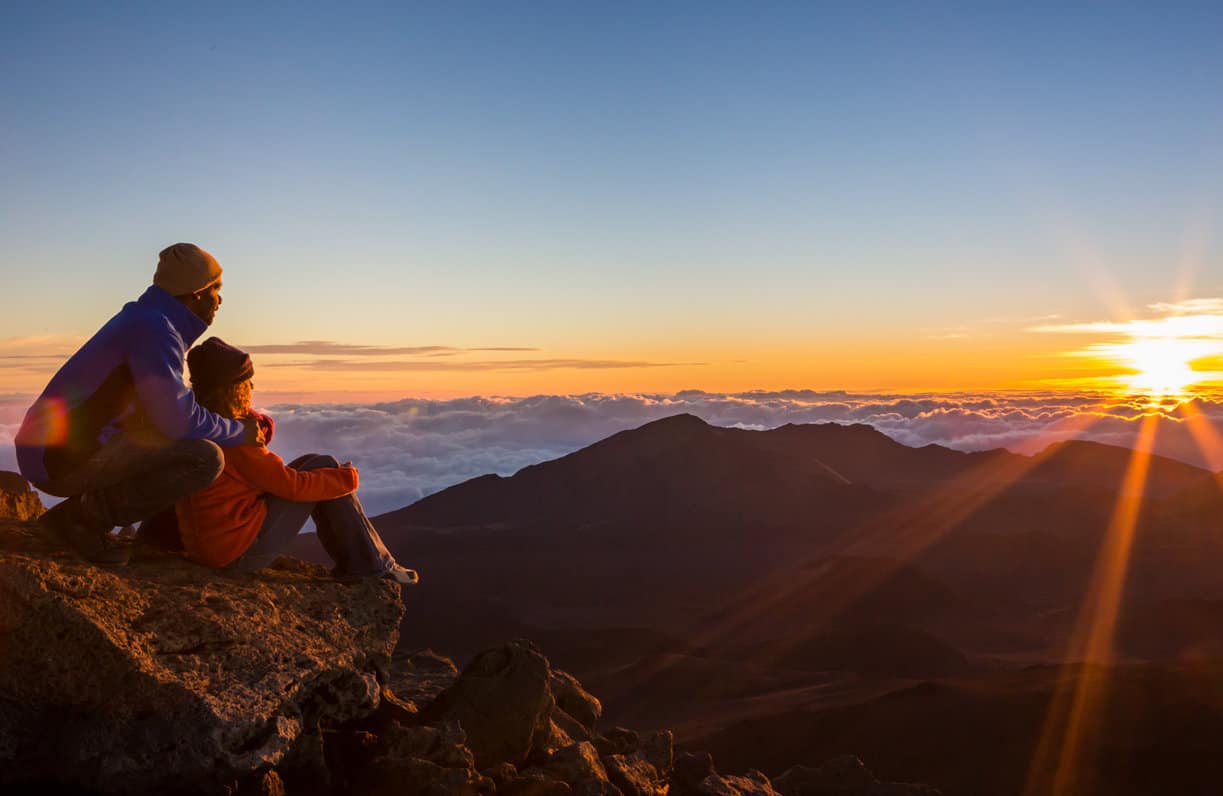
Haleakalā National Park in Hawaii
Seeing the sunrise or the sunset on top of Haleakalā is a bucket list item. However, this national park offers more. Visitors can learn about Maui’s volcanic history and why the park’s landscape resembles a moonscape.
Located on Maui, Haleakala National Park is open 24 hours a day, 365 days a year. A vehicle pass is $30 for three days and includes all occupants
Top Things to Do at Haleakala National Park
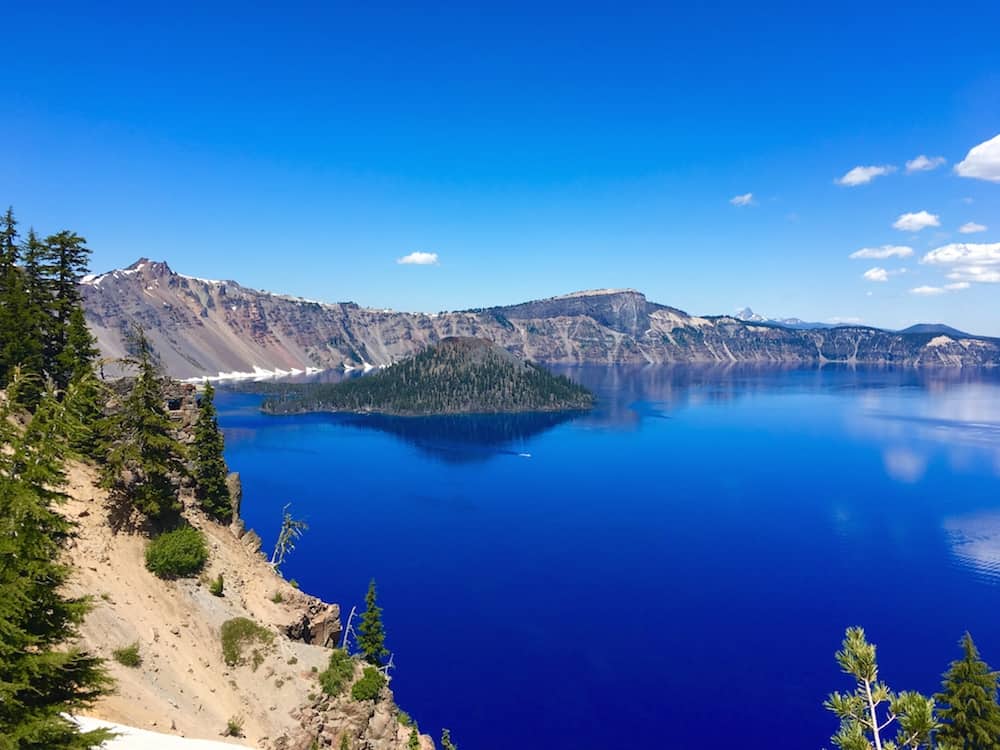
Crater Lake National Park in Oregon
About 7,700 years ago, a massive eruption caused a peak to collapse. Over the years, rain and snow filled the area to form the deepest lake in the U.S.
First, drive the Scenic Rim Drive during the summer. Or grab a drink and sit in one of the rocking chairs behind the Crater Lake Lodge. From November to May, the road is plowed to the Rim Village only, and many trails are closed for the season.
Located in southern Oregon, take Highway 62 to the Western Entrance (open year-round). Crater Lake National Park is open 365 days a year and 24 hours a day. Use an America the Beautiful annual pass ($80) or purchase a 7-day pass for $25 per vehicle to explore in summer and $15 from fall to spring.
Top National Parks to Explore in Oregon
Mount Rainier National Park in Washington
Mount Rainier is an active volcano that reaches 14,000 feet and is the most glaciated peak in the lower 48. Summer activities include hiking and biking, fall leaf peeping, and springtime wildflowers.
There are two main visitor areas: Longmire, the original park headquarters from 1899, with historic buildings and the National Park Inn, and the seasonal Paradise area, the jump-off point for climbers and home to the historic Paradise Inn (open seasonally).
Located in central Washington State, use Highway 706, the National Park Highway, to access the Longmire area. Mount Rainier National Park is open 365 days a year and 24 hours a day. Use an America the Beautiful annual pass ($80) or purchase a 7-day pass for $30.
Best Mountain Destinations for Families
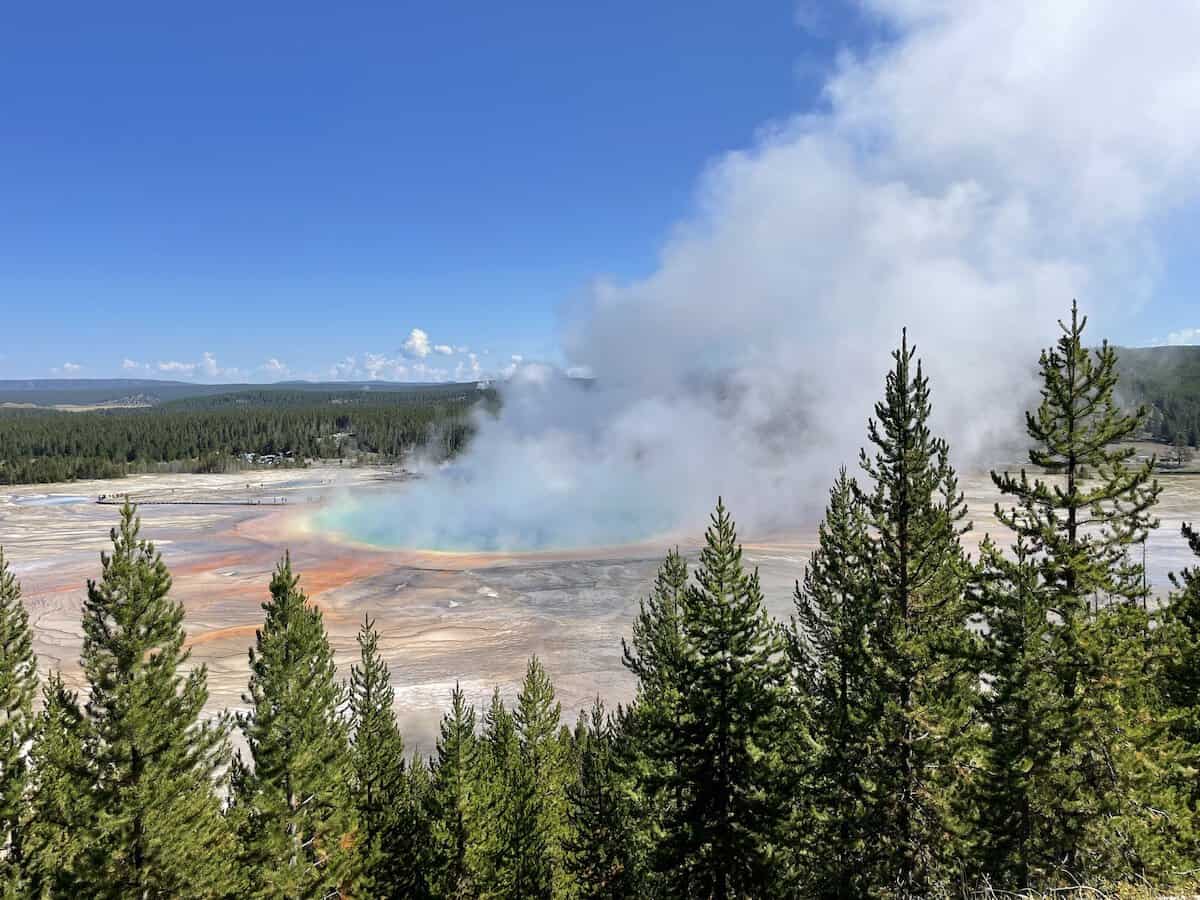
Yellowstone National Park in Wyoming, Montana and Idaho
The first national park is actually a supervolcano. So head to Upper Geyser Basin and Old Faithful to learn more about the volcanic activity in Yellowstone National Park.
First, the Upper Geyser Basin boasts the world’s largest concentration of geysers. Yellowstone’s hydrothermal features demonstrate its volcanic energy with three powerful eruptions over the last two million years.
Since the Magna is so close to the surface, see the water bubble and boil away in the Upper Geyser Basin. Geysers are the star of the geothermal show when they blow mist and steam over a hundred feet into the air.
Old Faithful Geyser erupts on average every 90 minutes, though the range can be 50 to 127 minutes. Each eruption lasts a little over a minute to 5 minutes and spews at least 3,700 gallons of water over a hundred feet into the air.
Old Faithful isn’t the only show. So check out other interesting geothermal features in the Upper Geyser Basin.
- Hot Springs—Pools of hot water in an array of colors
- Mudpots—Hot sulfuric acid breaks down the rock into a smelly clay that bubbles on the surface.
- Fumaroles—A steam vent without a lot of water
Yellowstone National Park is located in Wyoming, Montana and Idaho. It is open 365 days a year and 24 hours a day. You can use an America the Beautiful annual pass ($80) or purchase a 7-day pass for $35 per vehicle.
Complete Guide to Yellowstone National Park
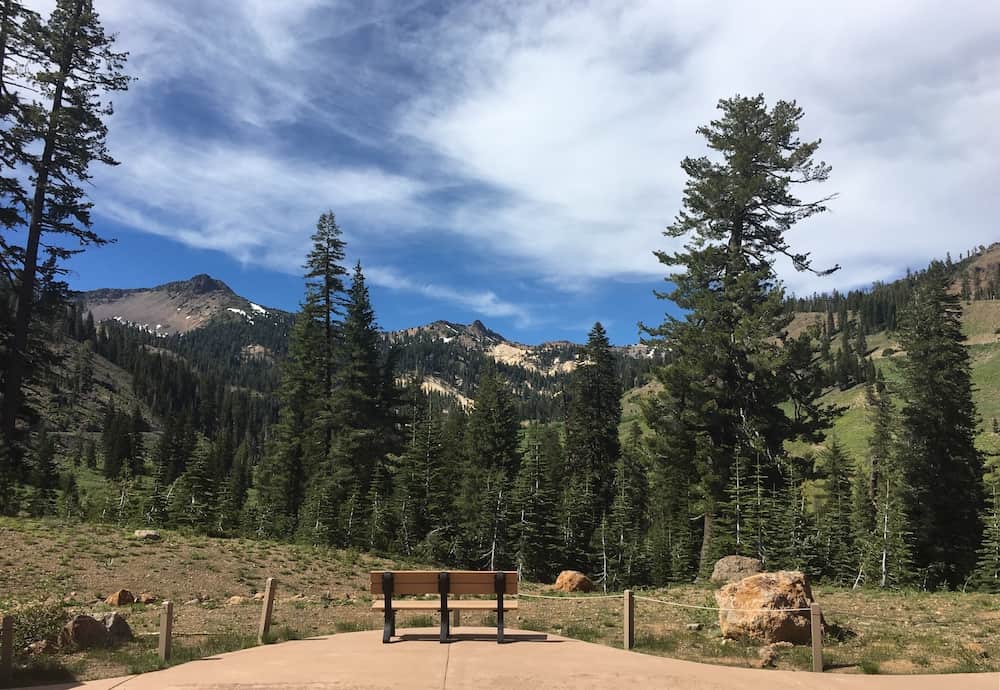
Lassen National Volcanic National Park in California
Sitting at the convergence of two mountain ranges, Lassen Volcanic National Park contains features from both. To the north, you can find the legendary volcanic activity of the Cascade Mountain Range. To the south, you can enjoy the evergreen forests and epic vistas of the Sierra Nevada Mountain Range.
Lassen Peak is one of the largest plug volcanoes in the world. You will also find all four types of volcanoes at Lassen Volcanic National Park. So look for volcanic features throughout the park, like mud pots and fumaroles, along with steam vents and sulfur springs.
- Shield—Mount Harness, near Juniper Lake
- Cinder Cone—Cinder Cone, near Butte Lake
- Plugged Dome—Lassen Peak
- Composite—Brokeoff Mountain, near the southern entrance
Lassen Volcanic National Park is open 365 days a year and 24 hours a day and Located northeast of San Francisco. Use an America the Beautiful annual pass ($80) or purchase a 7-day pass for $30 per vehicle.
The main road through Lassen National Park closes for snow, though the Lassen Volcanic National Park Highway usually opens in late May or early June and closes in late October or early November. Note: Highway 89 through the park is closed from the southwest due to a fire during the summer of 2024.
Top Things to Do in Lassen National Volcanic National Park
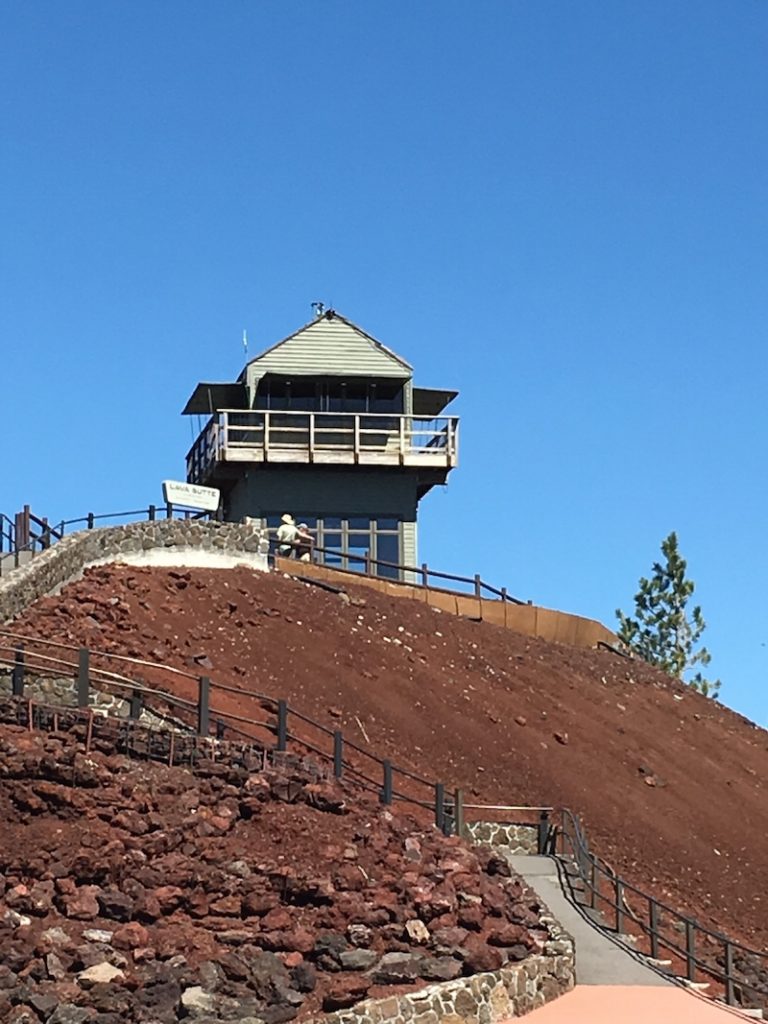
Newberry National Volcanic Monument in Oregon
Start at the Lava Lands Visitor Center to get an overview. Then, head to the top of the Lava Butte, a mountain of lava that looks exactly like lava mulch.
Or hike to the Big Obsidian Flow, a 1-mile loop moderate trail with a 500-foot elevation gain. The obsidian, or Black Glass, was formed 1,300 years ago and is the youngest lava flow in Oregon.
Newberry National Volcanic Monument is open year-round and located about 30 miles from Bend, Oregon. The visitor centers are open seasonally from May 1 to October 31. The monument requires admission, use an America the Beautiful annual pass ($80) or purchase a day-use pass for $5 per vehicle, good at all designated parking lots.
Top Things to Do in Bend
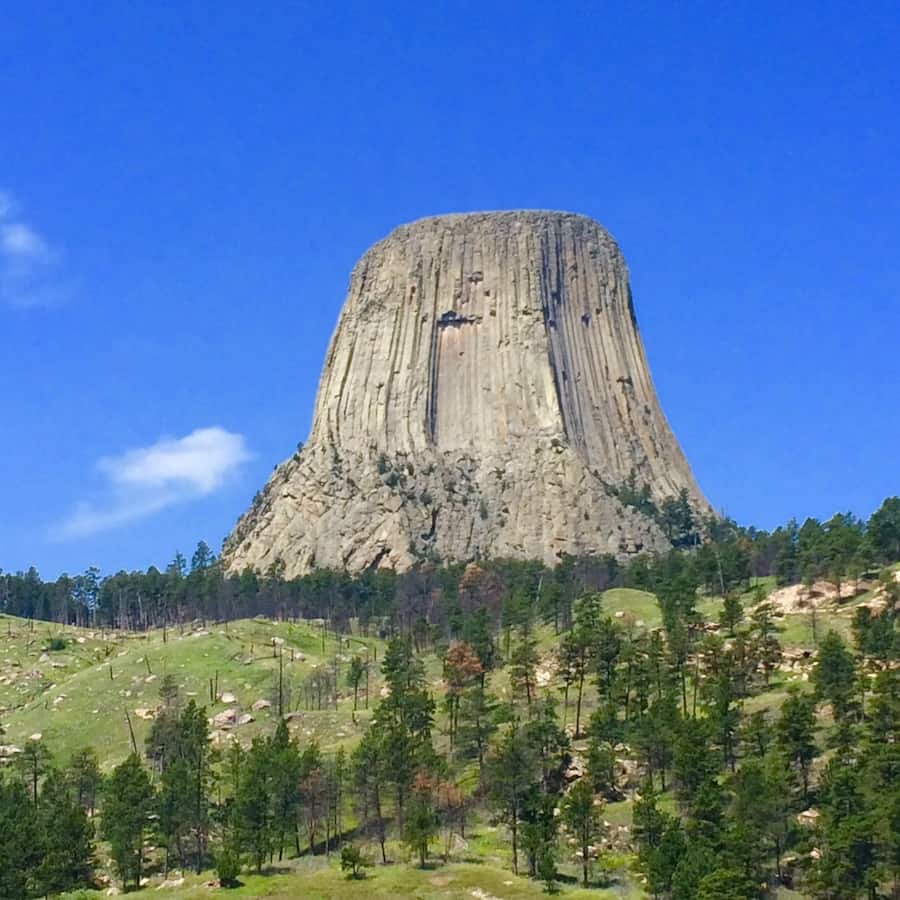
Devil Tower National Monument in Wyoming
As the largest example of columnar jointing in the world, many theories exist as to its formation. Though most theories conclude it’s made of magma. And be sure to look closely at the rock face for climbers.
Located 33 miles northeast of Moorcroft, Wyoming, on Wyoming Highway 24, Devils Tower is open 24 hours a day and closed on Christmas and New Year’s Day. To explore the monument, you can use an America the Beautiful annual pass ($80) or purchase a 7-day pass for $25 per vehicle.
The Visitors Center is open from 8 a.m. to 7 p.m. during the summer season and from 9 a.m. to 4 p.m. during the rest of the year.
Top Things to Do at Devils Tower
Sunset Crater National Monument in Arizona
Explore an area protecting two different volcanoes. First, the Sunset Crater Volcano is a 1000-foot cinder cone. Then, the Lenox Crater Volcano is a 300-foot cinder cone.
During your visit, check out the Bonito Lava Flow, which has several trails. Then, drive through the park to the neighboring Wupatki National Monument.
Located at 6082 Sunset Crater near Flagstaff in northern Arizona. Open 7 days a week, 24 hours a day and closed on December 25. Use an America the Beautiful annual pass ($80) or purchase a 7-day pass for $25.
The visitor center is open every day from 9 a.m. to 5 p.m.

Mount St. Helens National Volcanic Park in Washington
On a quiet Sunday morning in 1980, the snowcapped mountain of Mount St. Helens vaporized. Once a recreational playground for Washington, a mudslide decimated its forest, and a crater remained where the peak once stood.
After the eruption, Mount St. Helens went from a 9,677-foot snow-capped peak to an 8,363-foot mountain with a one-mile-wide, horseshoe-shaped crater. Since the 1980 eruption, Mount St. Helens has continued to rumble, with intermittent episodes of venting steam and erupting lava domes. The majority of the area is closed to visitors so scientists can continue to monitor the volcanic activity.
A trip to Mount St. Helens with kids is a must for your Washington road trip. And the vistors center offers a Junior Ranger program with a dramatic film.
The Johnston Ridge Observatory is located at 24000 Spirit Lake Highway in southern Washington State. It remains closed after a landslide and will remain closed until 2027.
Top Things to Do at Mount St. Helens
Craters of the Moon National Monument and Preserve in Idaho
From the highway, you can see a black ocean of lava with wave after wave in southern Idaho. It looks like a moonscape, for sure. I recommend you drive the 7-mile loop from the visitor center to see the lava fields up close.
Located off U.S. Highway 20/26/93 in between Arco and Carey, Idaho. Craters of the Moon National Monument is open 365 days a year and 24 hours a day. Use an America the Beautiful annual pass ($80) or purchase a 7-day pass for $20.
Lava Beds National Monument in California
Half a million years ago, the Medicine Lake Shield Volcano started to erupt. So, find 800 caves along with Native American rock art. First, drive the Cave Loop Drive during your visit. Then, walk through the visitor center.
Located at 1 Indian Well near Tulelake on the northern California border. Lava Beds National Monument is open 365 days a year and 24 hours a day. Use an America the Beautiful annual pass ($80) or purchase a 7-day pass for $25.
The visitor center is open every day with seasonal hours and closed major holidays.
Capulin Volcano National Monument in New Mexico
For 10,000 years, humanity has lived around Capulin Volcano. To explore the area, take the Lava Flow Trail hike at the base of the volcano. Or you can drive Volcano Road, which winds around to the top of Capulin Volcano.
Located at 44 Volcano Road in Northeast New Mexico. Capulin Volcano National Monument is open from dawn to dusk. Use an America the Beautiful annual pass ($80) or purchase a 7-day pass for $20.
El Malpais National Monument in New Mexico
Explore lava tube caves, cinder cones and sandstone bluffs at this northern New Mexico National Monument. Start at the El Malpais National Monument visitor center, which is open from 9 a.m. to 5 p.m., except for major holidays.
It is located south of exit 85 off I-40. The grounds are open from dawn to dusk and it is free to enter.
Katmai National Park and Preserve in Alaska
Located along the Ring of Fire, this area offers lots of volcanic activity. Three volcanoes have erupted in the last 100 years. Along with volcanic activity, Katmai is a prime bear-watching site. It can only be accessed by plane or boat.
It’s open 24 hours a day and 7 days a week. There is no fee to enter. However, you must take a float plane or boat to visit it.
Aniakchak National Monument in Alaska
Located along the Aleutian Islands, Aniakchak National Monument is one of the least visited sites. It’s also home to a six-mile-wide, deep caldera from an eruption 3,500 years ago. Aniakchak National Monument is a prime bear-watching site.
It’s open 24 hours a day and 7 days a week. There is no fee to enter. It’s only accessed by plane or boat.
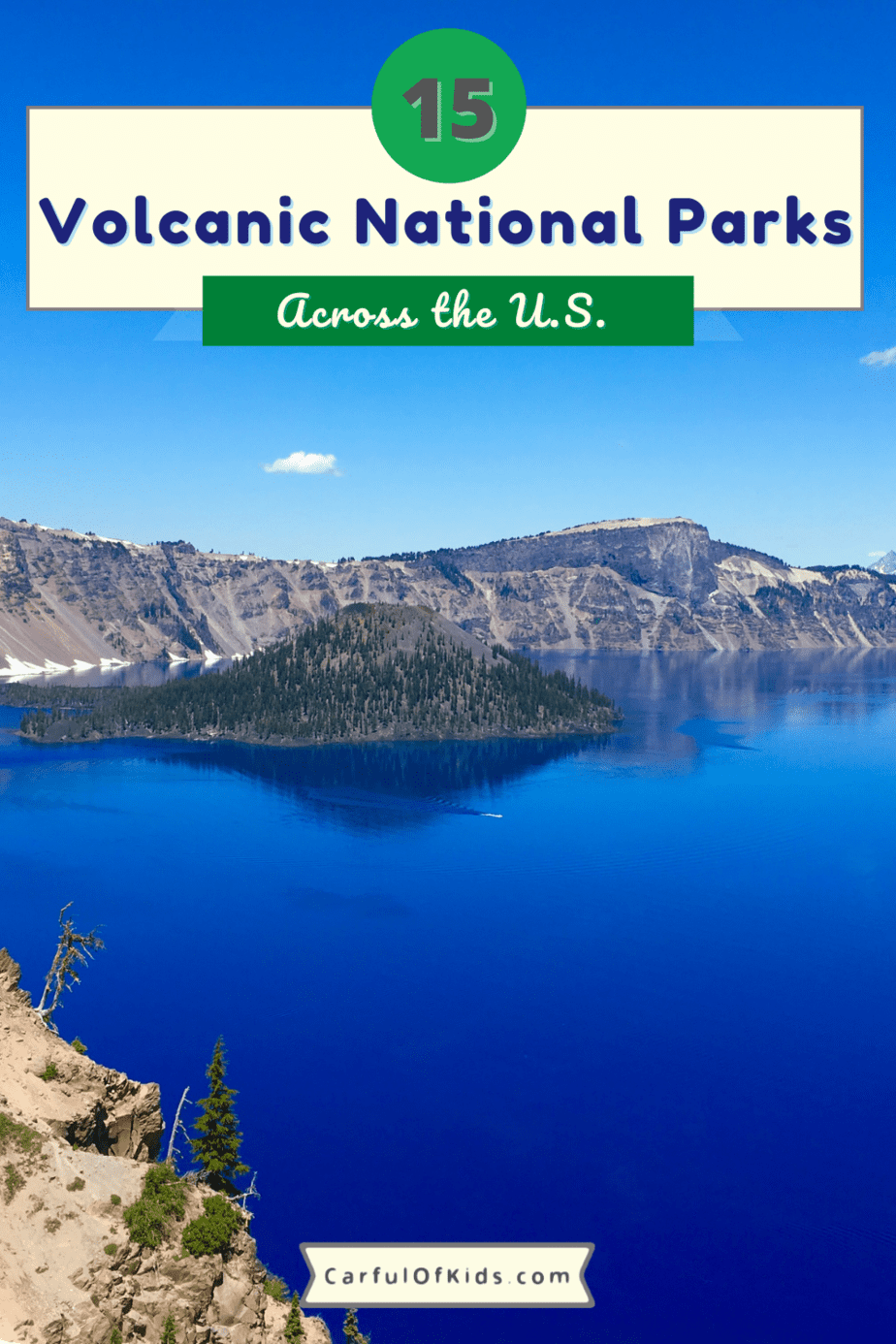


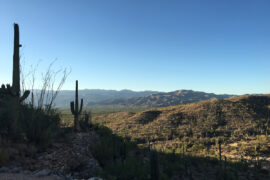
Comments are closed.